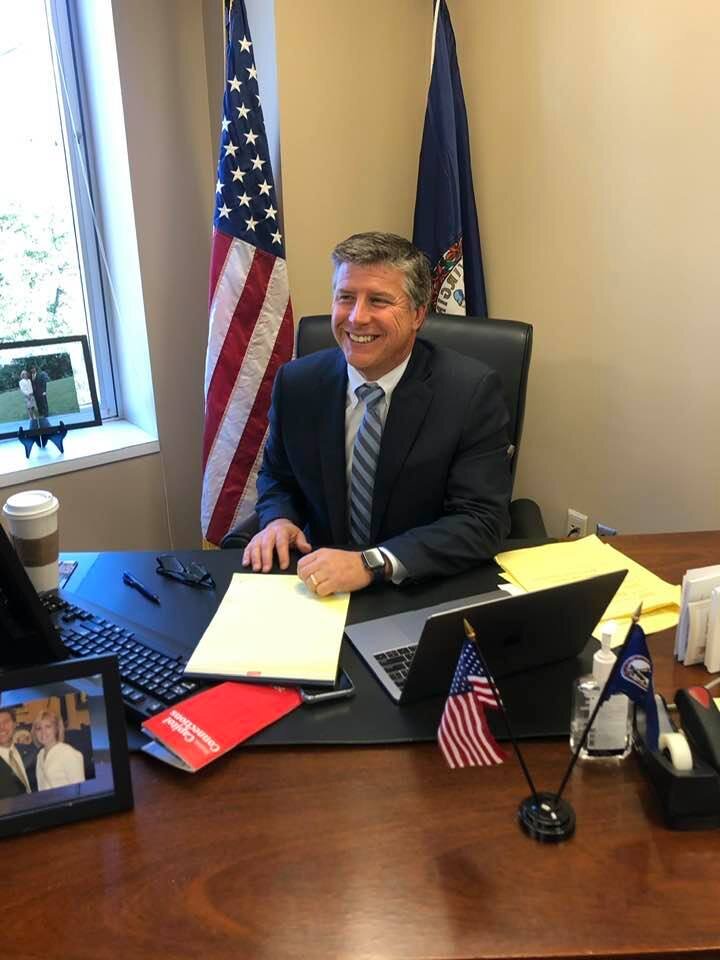I wrote to you on Facebook recently about the Virginia Department of Education’s (VDOE) adoption of “Model Policies for the Treatment of Transgender Students in Public Elementary and Secondary Schools.” The VDOE created these model policies based on direction from the Virginia General Assembly in 2020. Most of my colleagues and I voted against that bill, but the far-left liberal majority controls both chambers of the legislature and the bill passed into law.
Per law, these “model policies” MUST be adopted by each local School Board in time for the 2021-22 school year in Virginia. Each School Board may choose to adopt policies that are more strict than the model, but they MUST adopt AT LEAST the model policies.
Rather than list the items of concern on Facebook, I’m going to list them here for your review. You will notice that the document contains the actual required policies in a box with words written in italics. The other sections are “guidance” from VDOE as it pertains to each policy.
To view the complete document from VDOE, go here: https://www.doe.virginia.gov/support/gender-diversity/transgender-student-model-policies.docx
TOPIC: STUDENT IDENTIFICATION
DOE Model Policy (must be adopted by school boards): “Schools shall allow students to use a name and gender pronouns that reflect their gender identity without any substantiating evidence.” (Page 13)
DOE Guidance: “In the situation when parents or guardians of a minor student (under 18 years of age) do not agree with the student’s request to adopt a new name and pronouns, school divisions will need to determine whether to respect the student’s request, abide by the parent’s wishes to continue using the student’s legal name and sex assigned at birth, or develop an alternative that respects both the student and the parents.” (DOE Guidance, Page 13).
“A school employee’s intentional and persistent refusal to respect a student’s name and pronoun is considered discriminatory.” (DOE Guidance, Page 13)
“While the topic of transgender students usually focuses on transgender males or transgender females, there are students who identify as nonbinary or gender-expansive. Since the concept of gender is increasingly being viewed as a gender spectrum, it may be beneficial to remove gender from forms and documents or provide a broader, more inclusive range of options.” (DOE Guidance, Page 15)
TOPIC: DRESS CODE
DOE Model Policy (must be adopted by school boards): “Students have a right to dress in a manner consistent with their gender identity or gender expression. Schools shall administer and enforce dress and grooming codes consistently across the student body, regardless of actual or perceived gender identity or gender expression. Requirements for attire for school-related programs, activities, and events shall be gender-neutral.” (Page 17)
DOE Guidance: “Dress codes, including hairstyles, should encompass broad guidelines that are not gender-specific and free of gender stereotypes. For example, gender-inclusive language such as ‘clothing must be worn in a way such that genitals, buttocks, and nipples are covered with opaque material’ should be used rather than prohibiting certain types of clothing typically associated with one gender (e.g., “a mini skirt” or “camisole”). (DOE Guidance, Page 16)
TOPIC: ACCESS TO ACTIVITIES
DOE Model Policy (must be adopted by school boards): “Schools shall eliminate the practice of segregating students by gender to the extent possible. For any school program, event, or activity, including extra-curricular activities that are segregated by gender, the School Division shall allow students to participate in a manner consistent with their gender identity.” (Page 18- this does NOT impact VA High School League athletics.
DOE Guidance: “Gender-based policies, rules, and practices can have the effect of marginalizing, stigmatizing, and excluding students, regardless of their gender identity or gender expression. Examples of practices that may be based on gender include grouping students for class activities, gender-based homecoming or prom courts, limitations on who can attend as “couples” at school dances, and gender-based events such as father-daughter dances.” (DOE Guidance, Page 17)
“For overnight field trips, the school should not force the student into single-occupancy accommodations that are not required for other students; however, such alternative accommodations should be made available to any student requesting them. It is important that school divisions adopt policies and procedures that are focused on the safety of all students and seek to address privacy interests in situations involving individuals undressing or showering. School divisions should ensure that all students who participate in extracurricular activities that involve overnight trips are aware of the school’s policies and options available to them in advance.” (DOE Guidance, Page 17)
TOPIC: ACCESS TO FACILITIES
DOE Model Policy (must be adopted by school boards): “Access to facilities such as restrooms and locker rooms that correspond to a student’s gender identity shall be available to all students.” (Page 19)
DOE Guidance: “Schools frequently maintain separate restrooms, locker rooms or other facilities for males and females. Students should be allowed to use the facility that corresponds to their gender identity.” (DOE Guidance, Page 18)
“It can be emotionally harmful for a transgender student to be questioned regarding the use of restrooms and facilities. School staff should not confront students about their gender identity upon entry into the restroom.” (DOE Guidance, Page 18)
